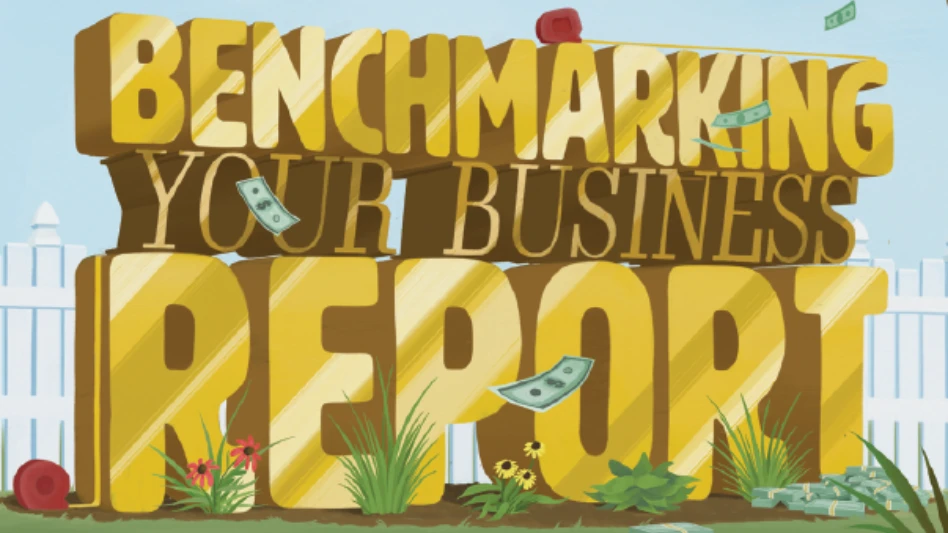
You know technology makes your business more efficient and is generally beneficial for your company. Now what?
Brian Williams, a sales and executive coach at Perspectivity International, told the attendees at Lawn & Landscape’s Technology Conference that there’s a smart way to implement technology. Failing to use tech the right way could overwhelm your employees and ultimately turn them off from all types of solutions in the future.
“If you have tactics without strategy…you’re never going to get anywhere,” Williams said. “We need both.”
Through three primary points – identifying the specific problem, a few technology and tool suggestions, and making the right business leadership decisions – Williams showed attendees how to make the switch to technology as seamless as possible.
“What we do know is that change is difficult, so give it the time it deserves,” Williams said.
PROBLEM. You can’t “just do it.” Williams said you’ll burn a lot of money doing it that way. Clearly identify the problem you need technology to solve first helps companies know precisely what technology is needed. Someone who’s clearly identified the problem knows how much revenue the problem is costing the company, how many people it affects and its overall impact.
“You’d be surprised to see what happens when you use the most powerful computer in the world – it’s called your brain,” Williams said.
People often just buy technology because they have the budget to do so, Williams said. He shared Lawn & Landscape reporting that indicated investments in technology overwhelmingly didn’t help the companies recruit and retain employees like it was supposed to do.
On the other hand, Williams also said some decide they’ll just stand there and sit around waiting for people to come in with the perfect solution. Williams said many landscapers don’t even implement basic technologies like letting clients pay for services online.
“If two of you come to my door, I’m going to do business with the one who makes it easiest for me,” Williams said. “A lot of the market sees you as a commodity. They think cutting grass is all the same – cutting grass is cutting grass.”
TECHNOLOGY AND TOOLS. Technology is incredibly diverse and complicated, Williams said, so that’s why it’s so important to identify the problem first before seeking technology that could be somewhat beneficial.
Williams talked highly of Facebook and Instagram sales funnels. He showed an advertisement that said “5 Steps to Fix Yo Ugly Lawn,” with the subhead, “Did you know that your neighbors are talking about you?” When someone clicks the ad, it takes users to a landing page. The video that started playing was not introducing viewers to the company, but rather educating viewers how to make their lawns look better.
Ultimately, Williams said he wants users to come to the conclusion that making their lawns look that beautiful is too difficult. He said companies should place an appointment scheduler at the end of the video that encourages your sales leads to sign up for the services immediately. It takes no additional work on a business owner’s end and can be done any time, anywhere.
“Now, you’re at Chipotle eating lunch, and you’re making money,” Williams said.
INTELLIGENT BUSINESS DECISIONS. Williams said business leadership needs to have some technical background, specifically seeking out education on technology before they listen to sales pitches from software companies. When that’s done, leadership can ensure they’re not getting screwed over by a salesman and can even put some pressure on salesmen by asking pointed, informed questions.
“We’re not talking about becoming experts and getting a PhD in it, but we need some experience in it,” Williams said.
He also cautions leadership not to get too into the weeds with knowing the technology because it’s easy to think technology will always help solve every problem that exists within a company.
“I like to keep things simple,” Williams said. “One of the barriers to people embracing technology is it’s too complicated.”
Avoid buying technology just for the sake of having the technology. Ask yourself if a consultant or a coach could help solve the problem first rather than investing right away in technology. Williams also encourages companies to assemble an execution strategy through training, testing and tracking. Warn leadership to admit its faults and not be impatient or feed into its own pride.
“If it’s a people problem,” Williams said, “technology probably isn’t going to help you much.”
Latest from Lawn & Landscape
- The National Collegiate Landscape Competition is underway
- Keeping clients happy during the Super Bowl
- PBI-Gordon launches Field Development Team
- The New World Is Green: Grow With Marketing Analytics & AI
- Exmark launches autonomous commercial mower
- North by Northwest's charitable act for the Ronald McDonald House Charities
- Coxreels expands V-100 Series product line
- Landscape Workshop expands with 2 acquisitions





